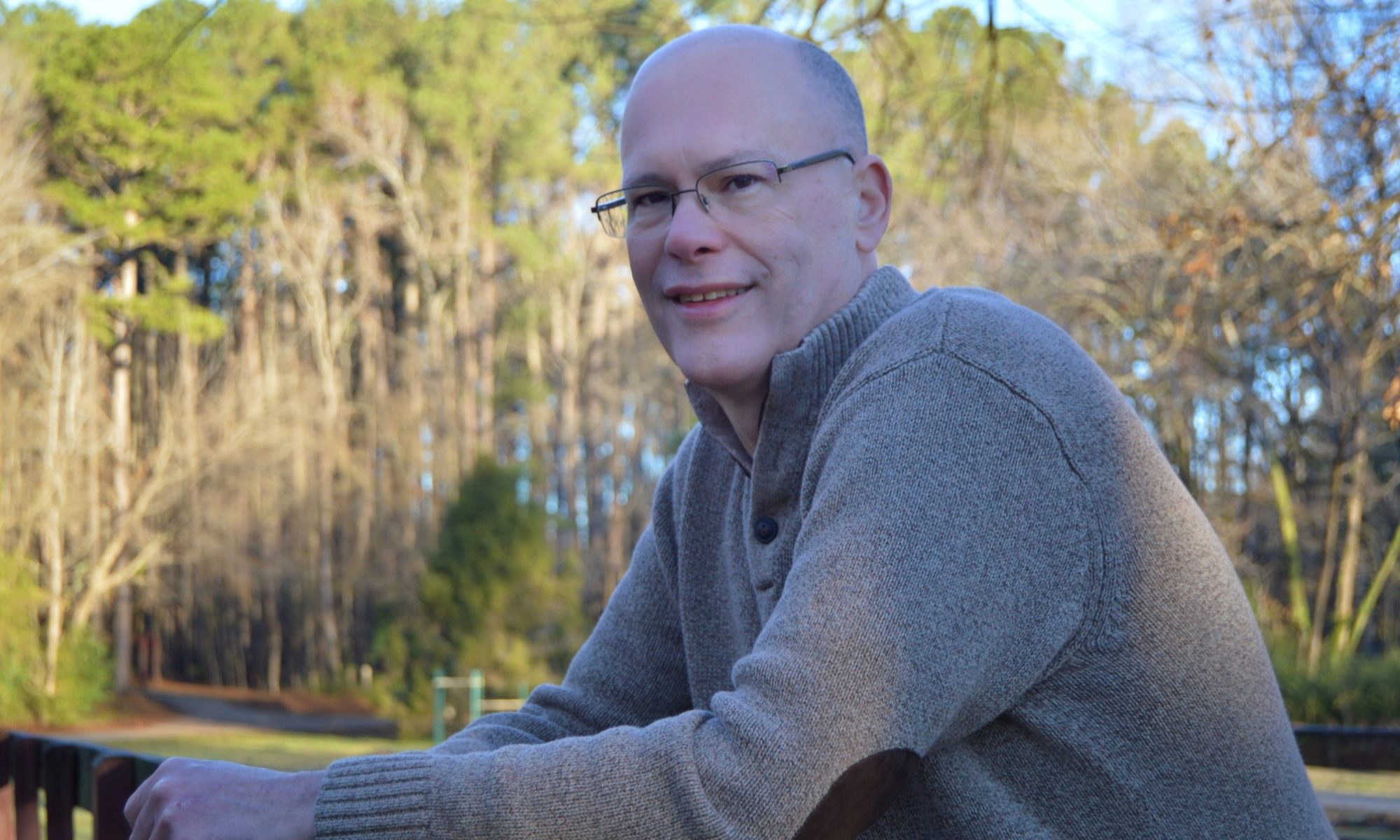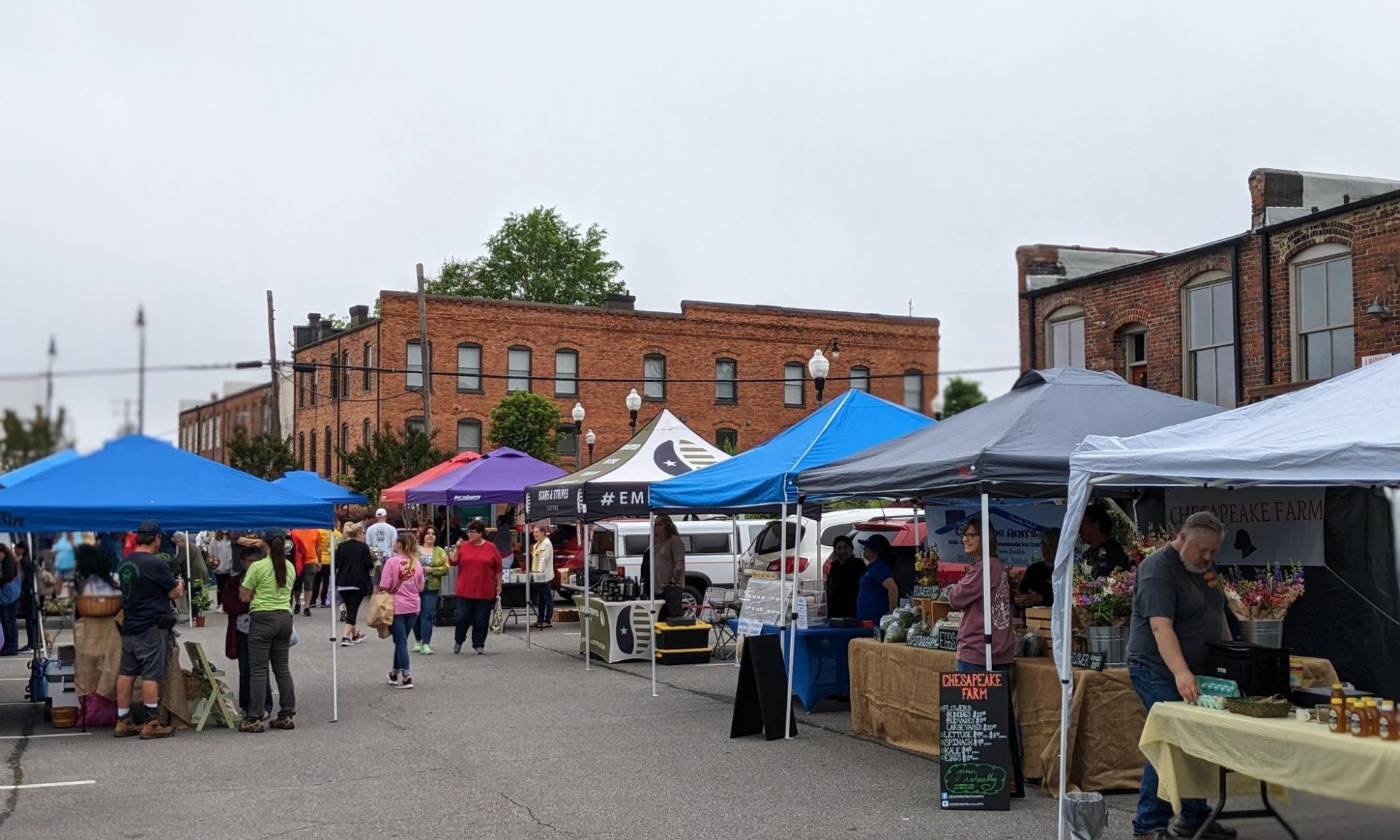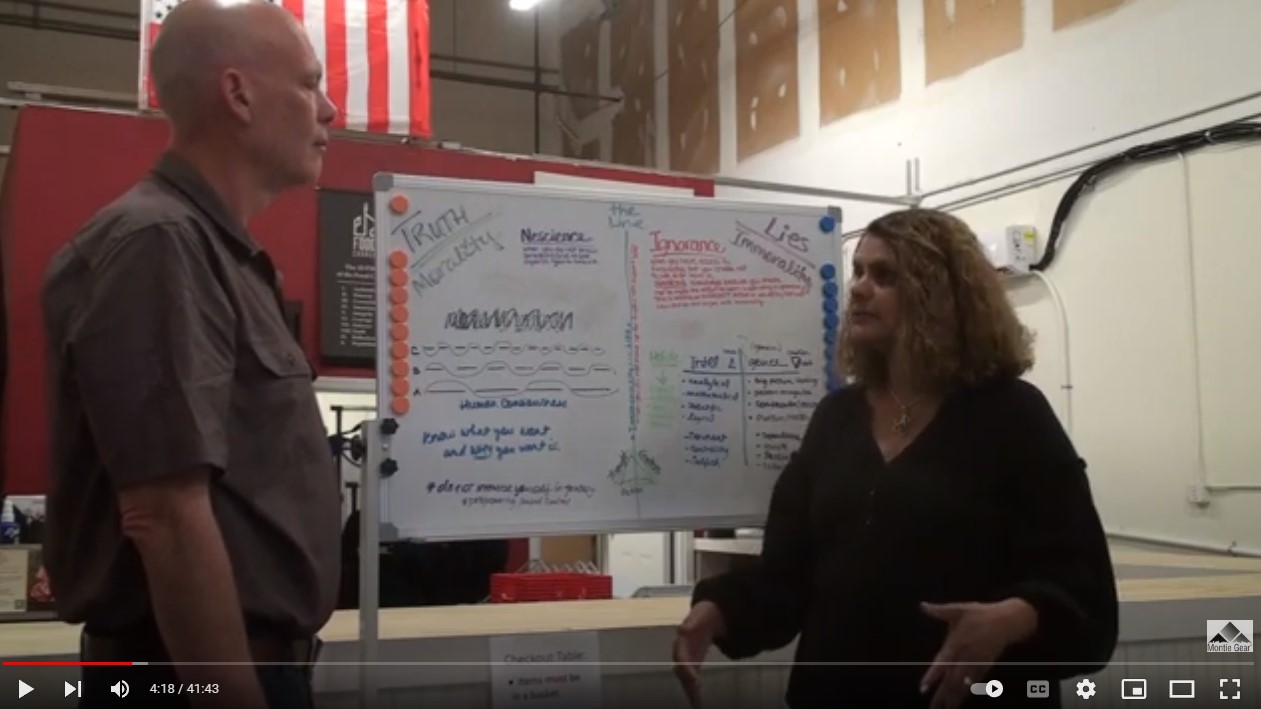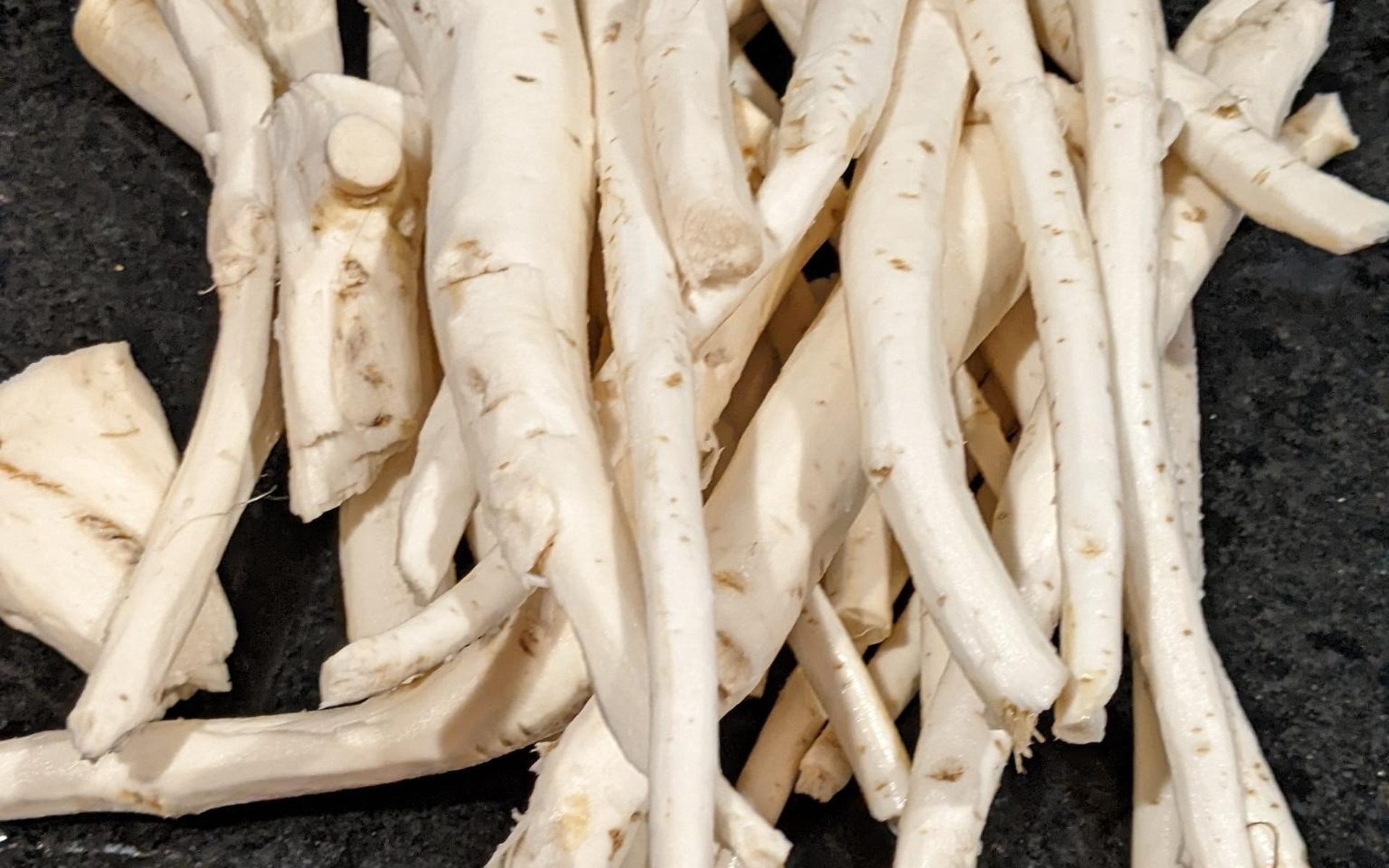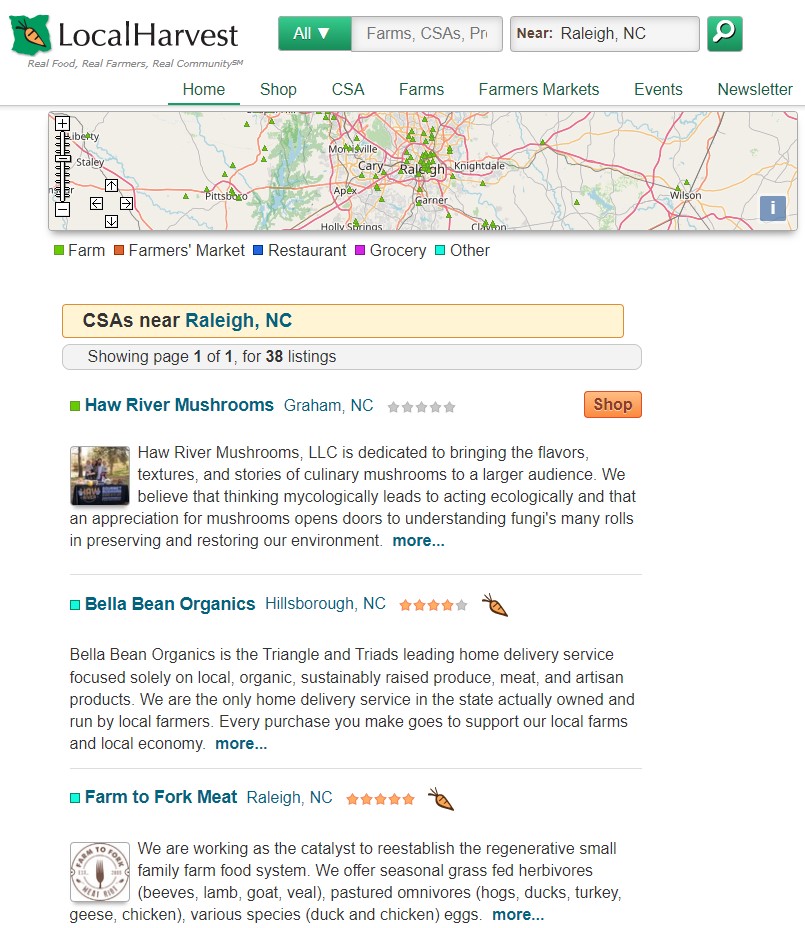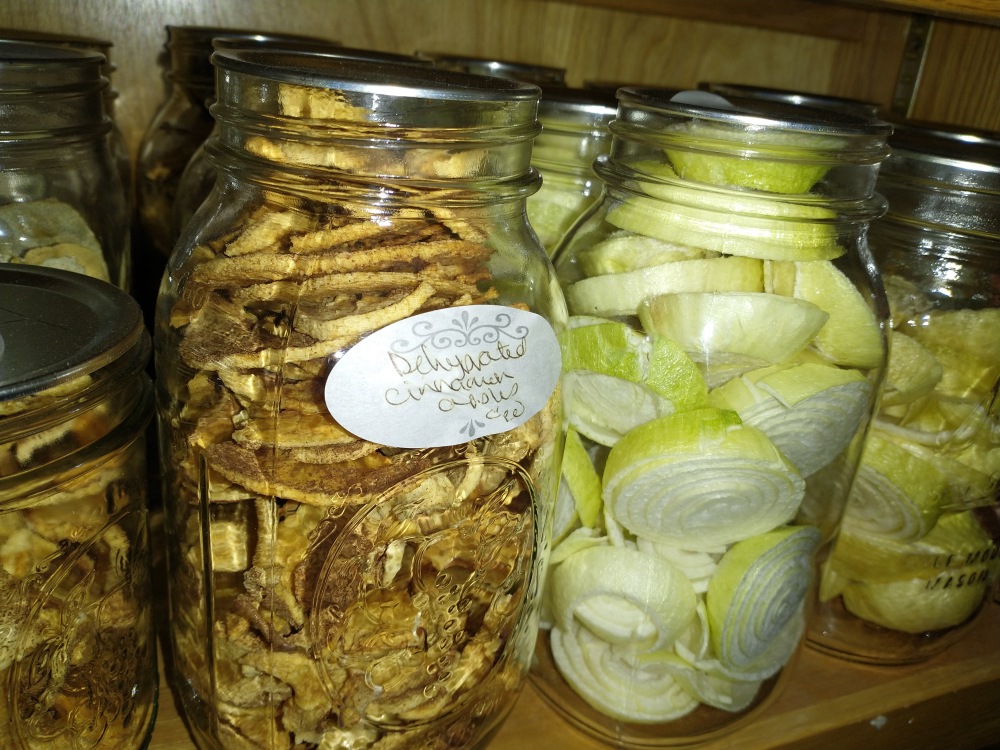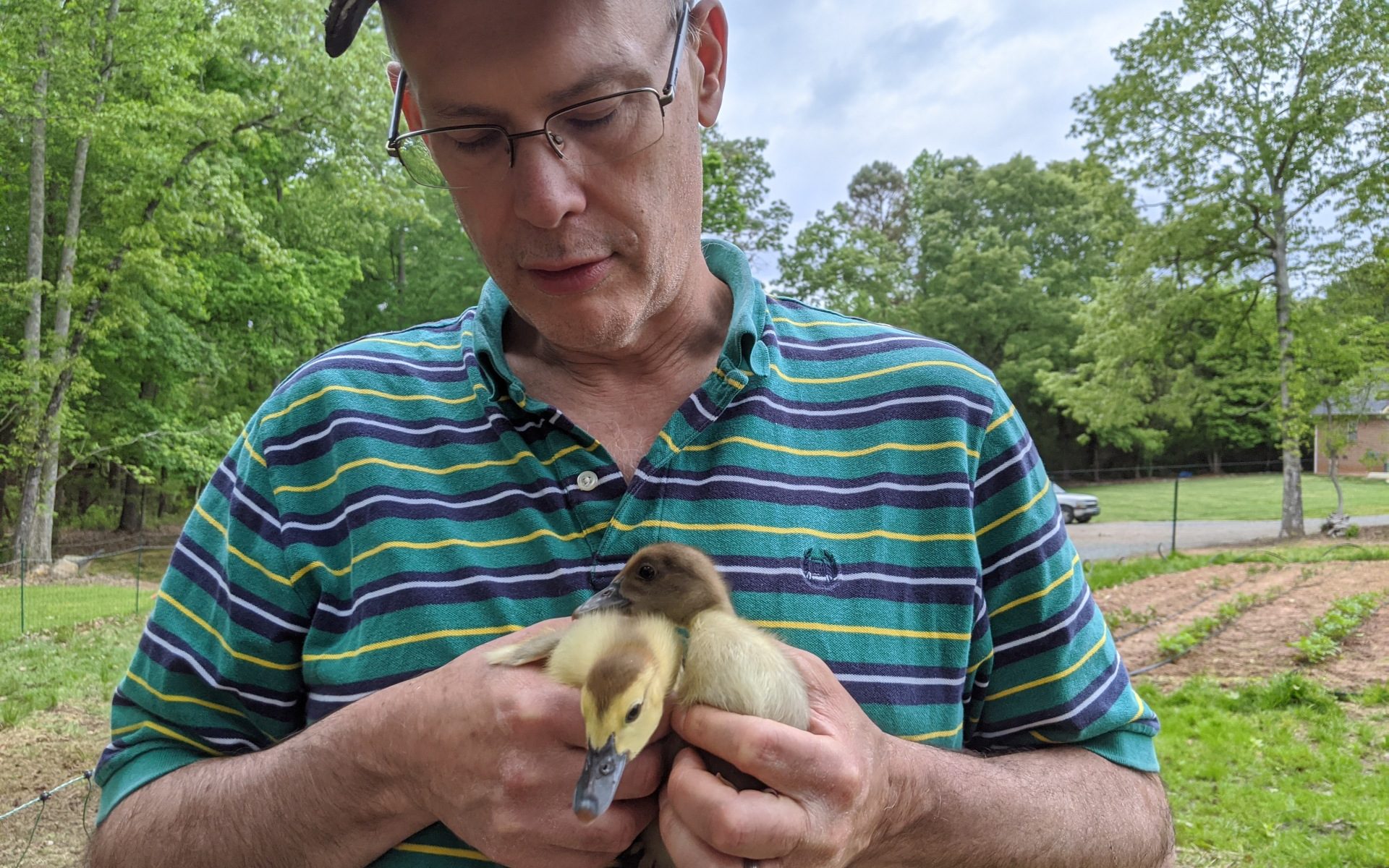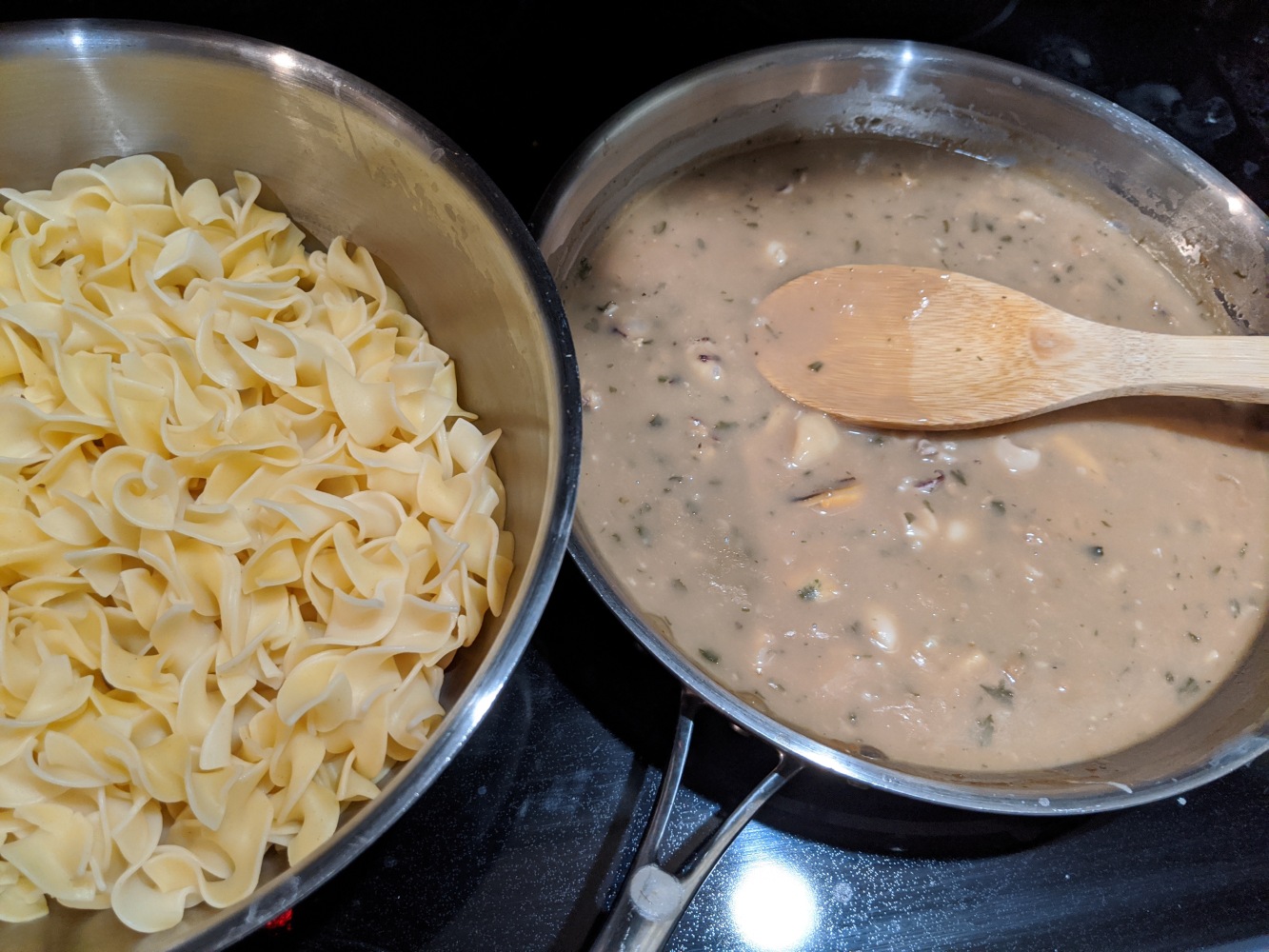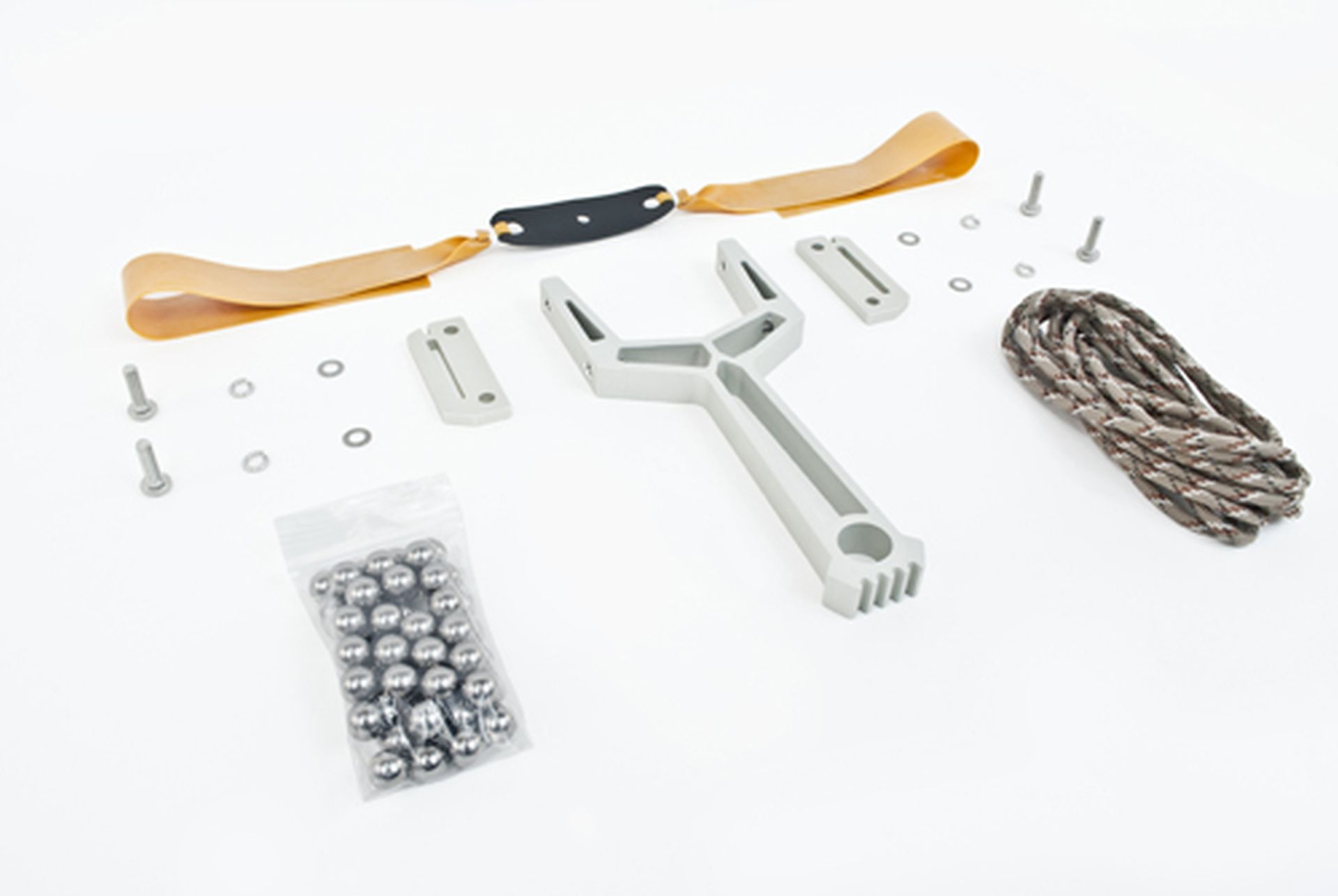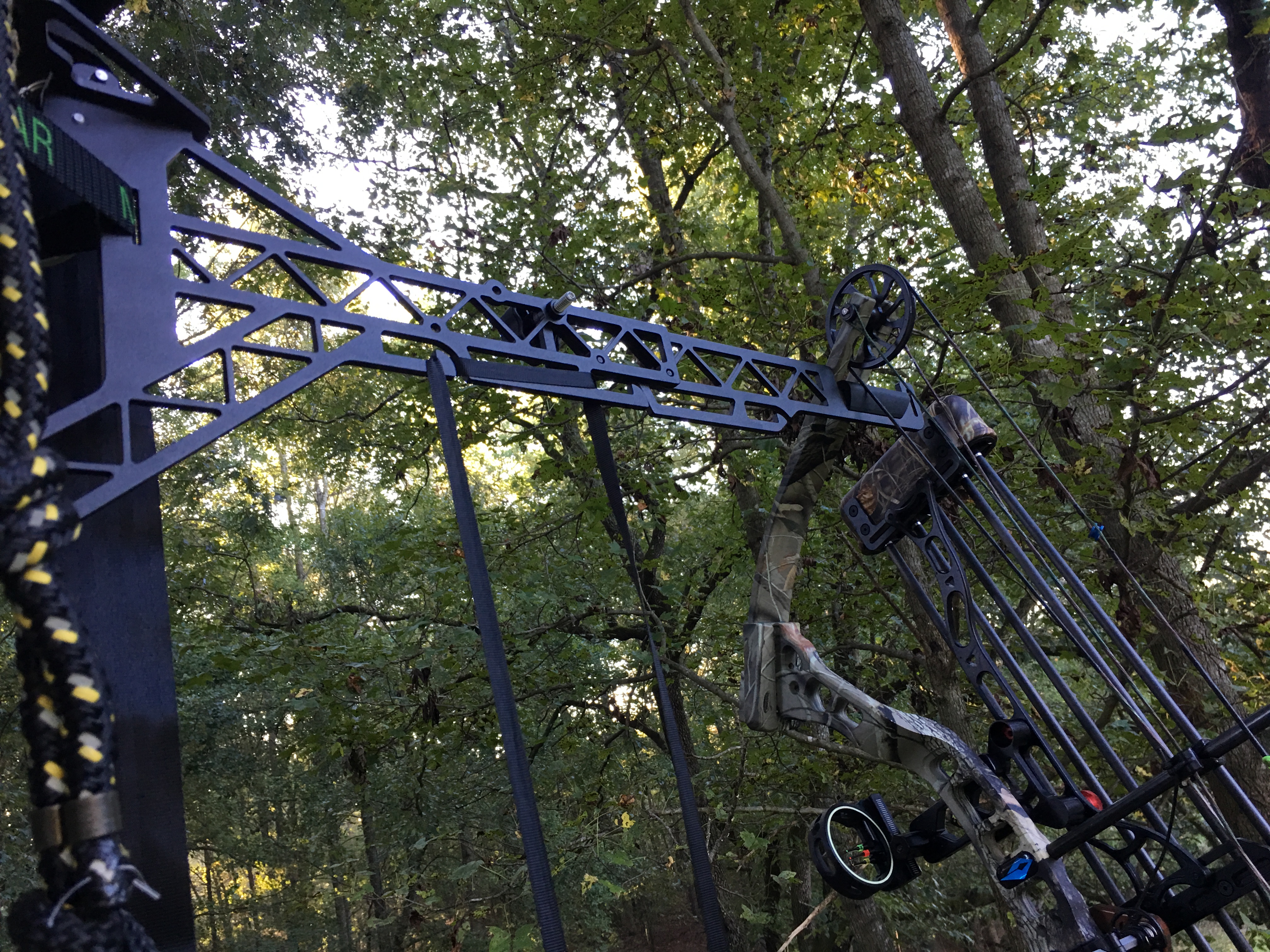State of the Farm and Pictures from This Week
This has been a busy week on the farm. We try to give a semi-annual update that talks about what is going on at the farm in detail. We’ve also been working this week on our potatoes, developing the back field and planting a few ornamental plants.
I had a few days on the farm this week to ponder the future plans for the farm. I’m taking a class with IDEO on Insights for Innovation. The class project revolves around the farm so it was good having time to ponder the future plans for the farm while working in the field.
Here are some pictures from this week
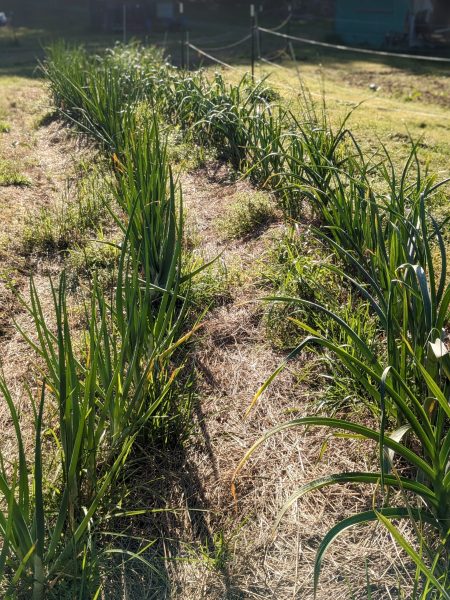




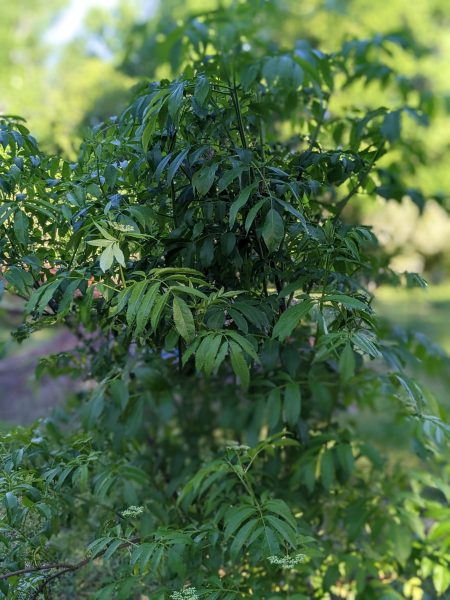










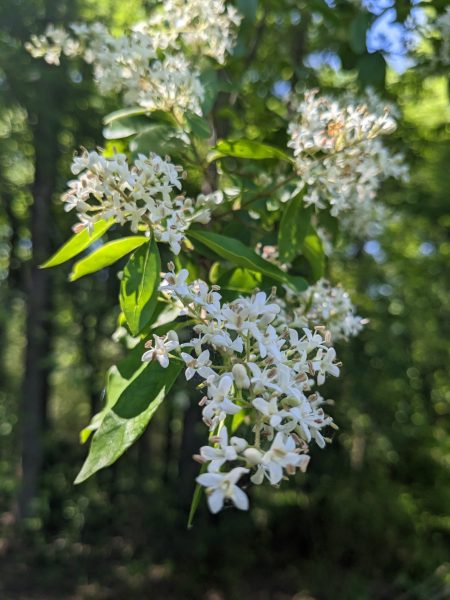

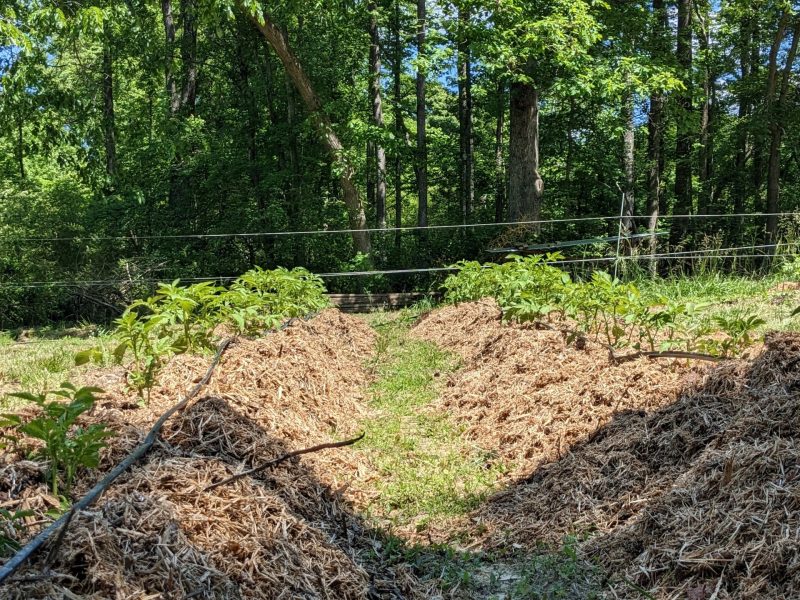
Interview with Niti Bali – Food Church founder
I’m taking a class called “Insights for Innovation” with IDEO. Part of that class is doing interviews for developing empathy and better understanding customers. Niti was the perfect person to interview to better understand the farm-to-fork community. I learned a lot in the interview and hope you do too.
Shopping List – Main Items that you need to preserve food
Why – Cost of Food is Increasing, Availability is Decreasing
https://www.bloomberg.com/news/articles/2021-12-10/price-shock-at-the-meat-counter-worsens-u-s-inflation-jitters – as an example beef is up 20% this year
I’ve seen numbers from 6 to 20% for other sectors of the food supply.
Lets do the math. Here is one analysis:
- $1 product in 2020 became a $1.20 product in 2021 (using 20% inflation) – i.e. your overall grocery bill went up 20% from 2020
- becomes a $1.44 product in 2022 (using 20% inflation) – i.e. your overall grocery bill went up 44% from 2020
- becomes a $1.728 product in 2023 (using 20% inflation) – i.e. your overall grocery bill went up 73% from 2020
- becomes a $2.07 product in 2024 (using 20% inflation) – – i.e. your overall grocery bill went up 100.1% from 2020 (doubled in 3 years)
Maybe groceries prices will stabilize and maybe the supply chain issues will resolve themselves. I doubt it, but I obviously can’t predict the future. I can learn from history. The American empire is in decline and we have a few long decades ahead.

Thinking About The 2022 Growing Season
Looking forward to growing season, you can break the challenges down into 2 broad areas:
1) raising a surplus of food (planting, maintaining, harvesting)
2) preserving the food
One of the challenges in dealing with fresh food is preserving it in a timely basis. When veggies are ripe they have to be picked, maintained in a cool environment and then preserved within a few days. This is common knowledge, but as we’ve gotten better at gardening and preserved food, it becomes clearer how difficult and how much work it is to make that work within the time constraints.
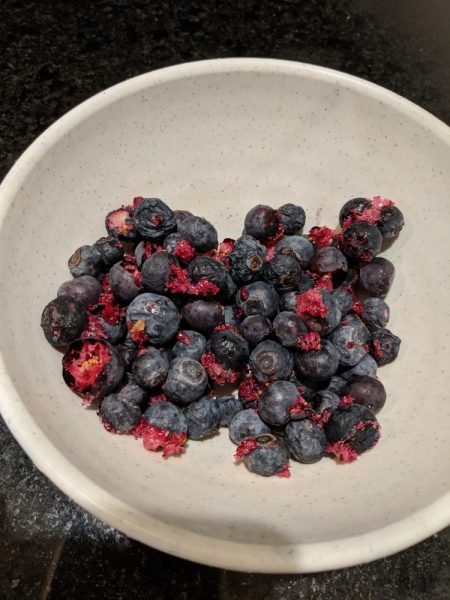
Lets take a look at the steps to preserve food:
1) prep the food – wash, clean and cut it up into what ever sizes are needed, blanche or cook (if needed). This part of the process is the most labor intensive and has to be done soon after the items are picked (time sensitive). After this is done, many items can be frozen until it is time to can or preserve them. This is also the step the requires the least amount of equipment (at least until we run out of freezer space).
2) preserve the food – water bath can, pressure can, dehydrate, freeze dry, freeze, etc.
3) post process – for dehydrating this would mean putting it in jars with oxygen absorbers and evacuating the jar, for canning you let the jars sit and cool before putting them up for storage (the easy part)
Items to Consider Buying for Preserving Food this Year
I realize each one of you has different space limitations and budgets, but here is a list of items that you will keep and use for decades, some for the rest of your life. I’m not trying to push you into doing anything, just giving you information and encouraging you to use your own judgement to do what ever it is that you need to do.
If grocery prices continue to rise, then there will be a rapid increase in people gardening (or trying to garden) and a subsequent rise in people trying to purchase these items below. There was a period last year were you just couldn’t get jars, and if you could find them online then the prices were really high, even for off brand jars.
Also look at being able to preserve your food as a way to save money, especially as food prices go up. If you have trouble paying the bills now, could you live with your food prices doubling? Now is your chance to do something about it. Buy food when it is less expensive and plentiful (i.e. during the harvest) and save it for later.
General Things Needed
Freezer – no matter how you preserve your food, a freezer is important. It allows you to prep food and freeze it until you can get it preserved. Freezing is also a great way to store food.
I’ll break down the overall things you’ll need for each method of food preservation.
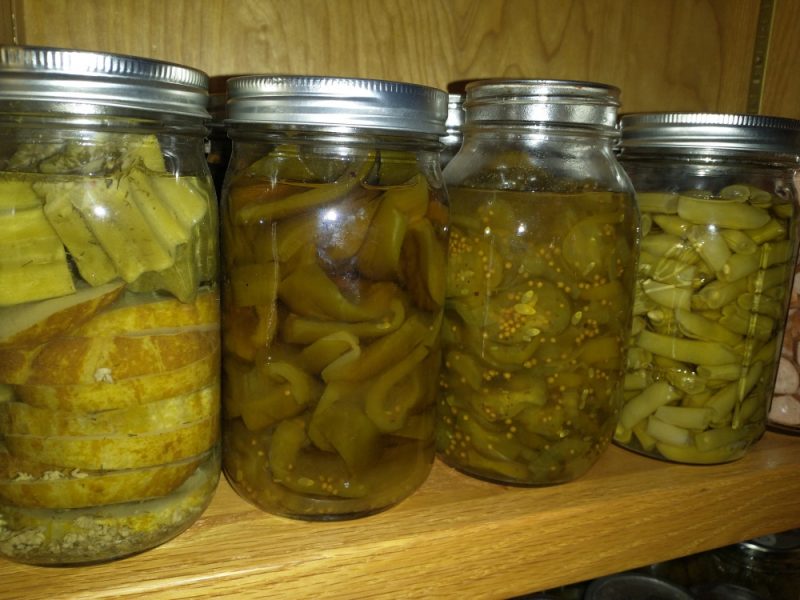
Canning
- 1 quart wide mouth Mason jars (either Mason or Ball or Kerr [least prerred], avoiding off brand jars) – maybe 100-200 jars, they last forever as long as they aren’t damaged, just buy a few every week, get the regular mouth if you can’t get wide mouth
- Lids and rings for the jars (brand name is preferred). You can also get resuable lids from Tattler (http://reusablecanninglids.com/)
- Pressure canner (used for everything from squash to potatoes to meat – bigger is much better, measure your stove to make sure it fits – one that doesn’t require a seal is best). Some stoves won’t work with or support the weight of a canner. If this is the case at your home, you may have to can outdoors using a propane stove or cooker.
https://www.lehmans.com/product/41-12-qt-high-quality-pressure-canner/
- Pot for water bath canning (high acidity things like tomatoes and pickles)
https://www.lehmans.com/product/black-enamelware-canner-215-qt/ – bigger is better, just measure your stove to make sure it fits
https://www.lehmans.com/product/enamelware-21-12-qt-canner-with-5-piece-tool-set/ – this one comes with jar grippers and funnels
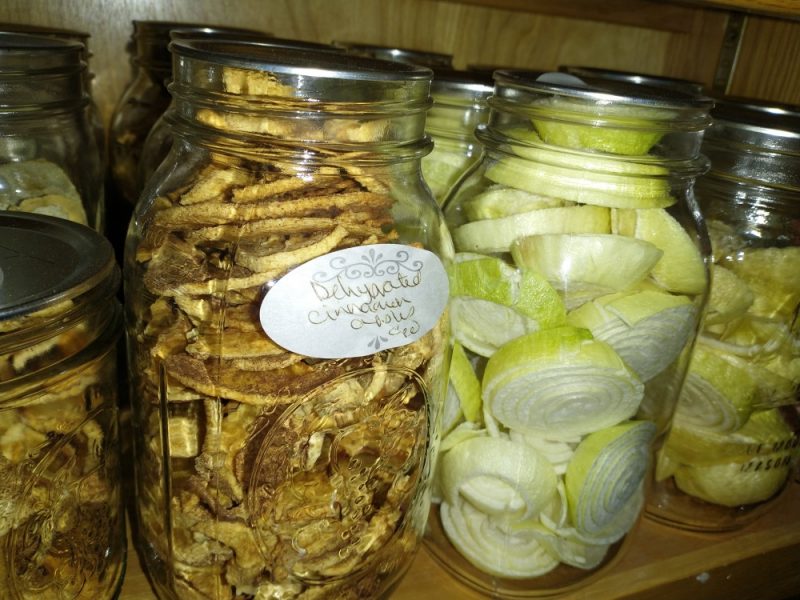
Dehydrating
- One quart wide mouth mason jars (either Mason or Ball, avoiding off brand jars) – maybe 100-200 jars, they last forever as long as they aren’t damaged, just buy a few every week, get the regular mouth if you can’t get wide mouth. Look for them in your grocery store and buy a dozen every week, along with lids and rings
- Lids and rings for the jars (brand name is preferred). You can also get resuable lids from Tattler (http://reusablecanninglids.com/)
- 1 or 2 dehydrators – during peak harvest having more than one is a win
https://excaliburdehydrator.com/ – gets good reviews
https://www.nesco.com/product/fd-80-snackmaster-square-food-dehydrator/ – we have this one with 9 trays
- Foodsaver – https://www.foodsaver.com/food-vacuum-sealers/countertop-vacuum-sealers/ – just make sure it has the jar sealer that fits normal and widemouth jars. This is an item i wouldn’t buy used unless you are very sure it hasn’t been used much and is fairly new. You’ll use this to seal jars after dehydrating the food.
- Mylar bags – Maybe a bag similar to Impak CTN08MFS12L – https://www.impakcorporation.com/flexible_packaging/mylar-bag/medium-pouches/CTN08MFS12L
- Oxygen absorbers – Impak SF300CS1500 – https://www.impakcorporation.com/oxygen_absorbers/packets/SF300CS1500
Freeze Drying
- Freeze dryer – https://harvestright.com/
- Foodsaver – https://www.foodsaver.com/food-vacuum-sealers/countertop-vacuum-sealers/ – just make sure it has the jar sealer that fits normal and widemouth jars. This is an item i wouldn’t buy used unless you are very sure it hasn’t been used much and is fairly new. You’ll use this to seal jars after dehydrating the food.
- Mylar bags – Maybe a bag similar to Impak CTN08MFS12L – https://www.impakcorporation.com/flexible_packaging/mylar-bag/medium-pouches/CTN08MFS12L
- Oxygen absorbers – Impak SF300CS1500 – https://www.impakcorporation.com/oxygen_absorbers/packets/SF300CS1500
- One quart wide mouth mason jars (either Mason or Ball, avoiding off brand jars) – maybe 100-200 jars, they last forever as long as they aren’t damaged, just buy a few every week, get the regular mouth if you can’t get wide mouth. Look for them in your grocery store and buy a dozen every week, along with lids and rings
- Lids and rings for the jars (brand name is preferred). You can also get resuable lids from Tattler (http://reusablecanninglids.com/)
NOTE: You maybe be able to find many of these things used, canners and jars. As long as jars aren’t chipped or broken they last forever. Often when someone stops canning they will give away their jars and pressure canners. If the pressure canner uses a gasket, you may be able to purchase a new one if the old one is unavailable or damaged.
Most grocery stores will have a limited supply of canning jars, just pick them up as they are available.
Use Your Judgment
Use your judgement and do what you can afford. I’m not suggesting in any way that you go in debt for these things. I am strongly suggesting that you buy jars / lids / rings and a dehydrator at a minimum. If you have the budget, then a freeze dryer would be an great investment. Freeze drying is the easiest process to do. Use your judgement. Hopefully that example inspires you to prosper in what could be a difficult few years.
audaces fortuna iuvat – fortune favors the bold
Parting thought – These links just products that I feel strongly enough to recommend. I have no relationship with any of these companies, other than being a customer.
Making Horseradish
My wife and I have this love / hate relationship dynamic with horseradish. We only eat a small amount of it, but we have several family members and friends that really like it. We mostly use it in Connie’s homemade cocktail sauce or on roast beef. Here is a chart showing the pros/cons with horseradish. This should help you decide if you want to grow it. My suggestion is to give it a try, just grow it in an area where you can mow around it to keep it contained where you want it. It will outgrow many garden plants, including asparagus – sorry Connie.
One strategy is to have enough plants that you can harvest about every 3 months. That way you can always have fresh horseradish on hand. The spring and summer harvests may not be as strong as the fall harvest but fresh still wins.
| Pros | Cons |
| Easy to Grow | Can be mildly invasive, best to grow it somewhere that you can mow around (easiest way to contain it, in my opinion) |
| Roots did deep in the soil, which is good to breakup soil | It can be invasive, so you need to make sure it doesn’t spread into unwanted parts of the garden |
| Very hardy | If it spreads into an unwanted area that you can’t mow then you have to week that area to control it |
| Deep roots help breakup soils to a depth of 1-2 feet | Have to dig deeply to remove the roots for processing. Takes time to eliminate from an area because of the roots you miss when digging the plant up to process |
| Tastes great in cocktail sauce or on roast beef. Stores about 3 months (refrigerated). Very easy to grow and you can dig it up any time to make more horseradish sauce | Limited uses. No way to preserve long term after processing (if there is, please let me know) |
| Easy to process | Can be time consuming to peel smaller roots |
| Medicinal uses | None |
| Can be harvested any time in the season | Best if harvested late in the season for best flavor, but not a requirement. Look for yellow leaves, usually after first frost. |
| Limited storage life after processing | Easy to store in the refrigerator |
| Plant pulls minerals from deep soil | None |
| Leaves are mineral laden and make great compost, just leave them where they fall | None |
| Leaves are great supplement for chickens – https://tinyurl.com/2p85yuuz | None |
Processing Horseradish
Step 1 – Wash roots and peel
I washed them outside first (they can be pretty dirty). Then wash them again in the sink. Make sure to remove any dark veins. Use safety glasses and good ventilation to protect your eyes.
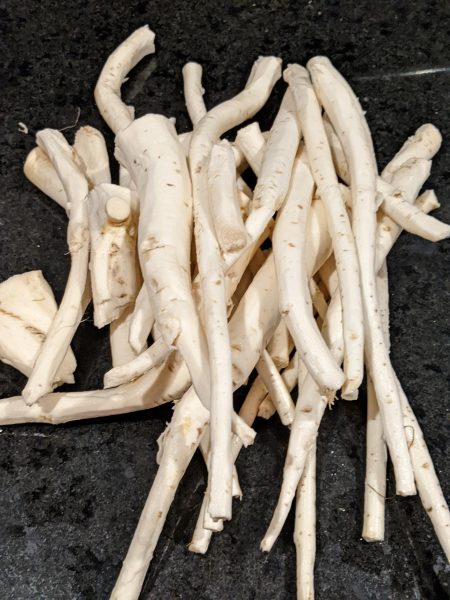
Step 2 – Chop the roots up so they fit in the food processor
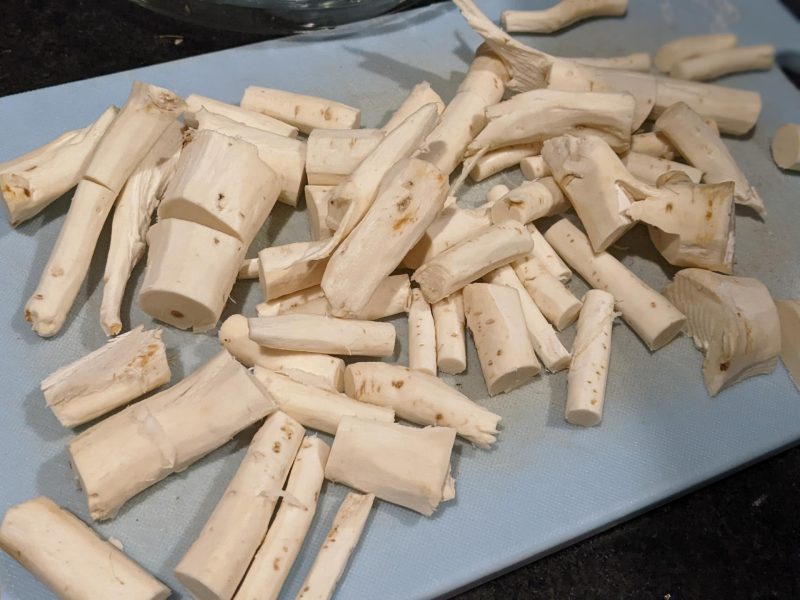
Step 3 – Pulse in food processor until finely chopped but not mushy.
Wait at least 2 minutes before adding the vinegar. The longer you wait the hotter the horseradish will get.
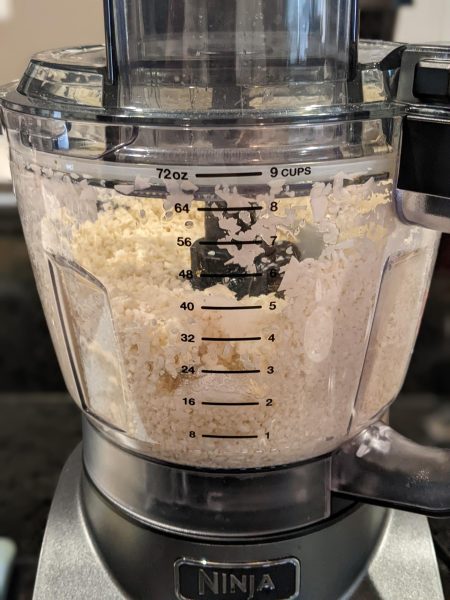
Step 4 – Take one lb of horseradish and add 1/2 cup of white vinegar and 1 cup of cold water. Add approximately 1 teaspoon of kosher salt (adjust to your taste preference
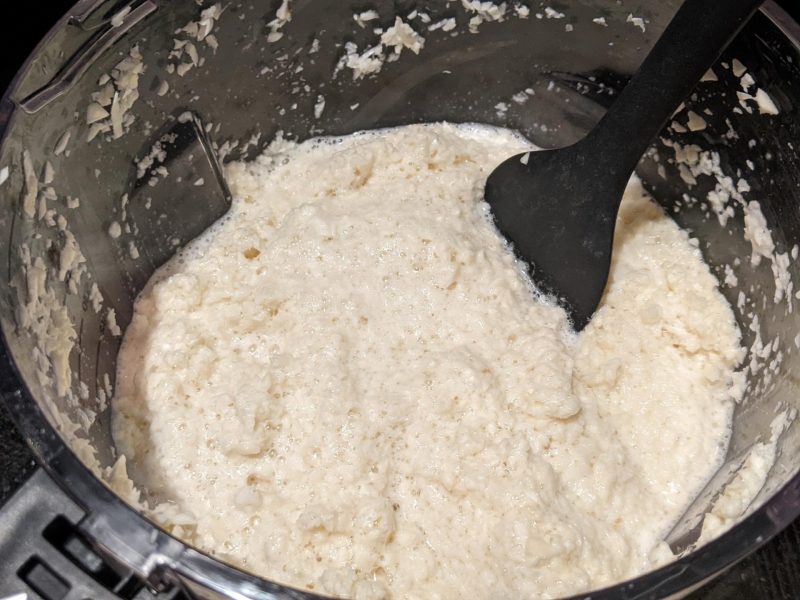
Step 5 – Pour into jars – we use smaller jars because most of the time the amount of horseradish used is fairly small. These are great Christmas presents.
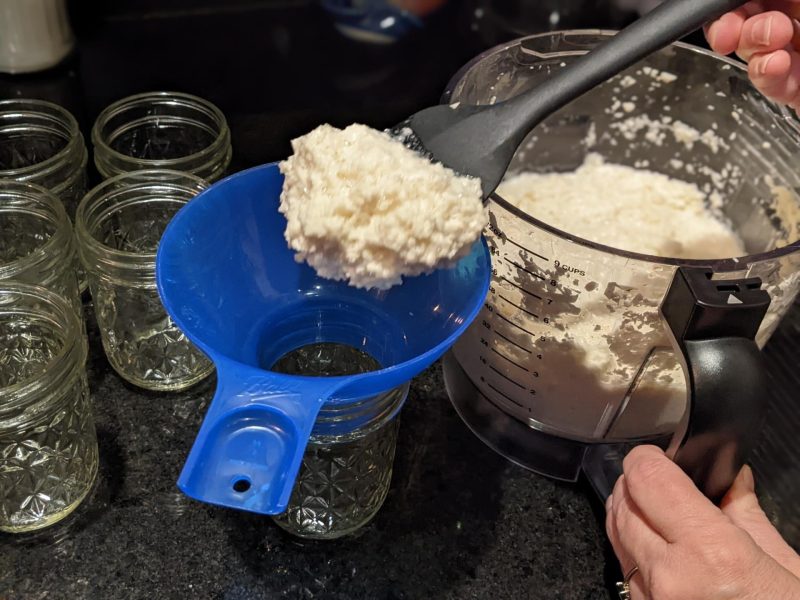
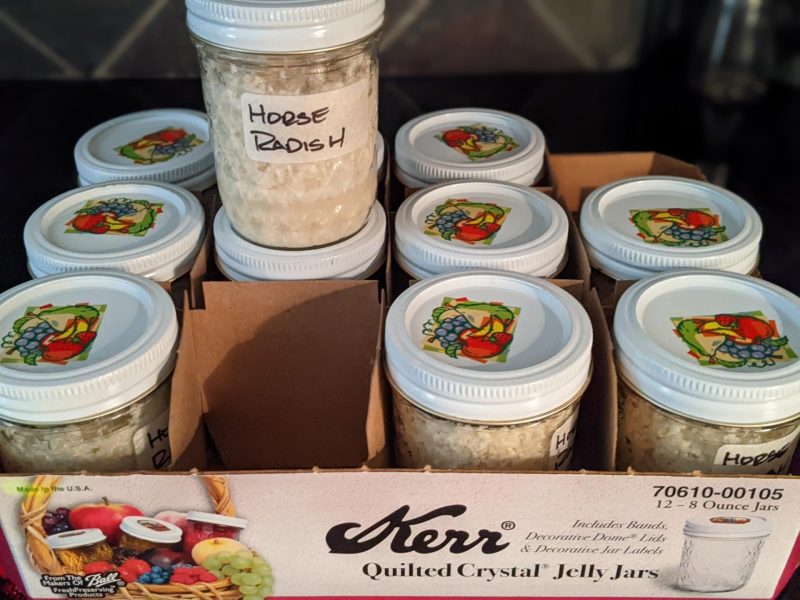
Enjoy!
Note – we’ve had limited success vacuum sealing the jars. I suspect that we would need to do the vacuum sealing process fairly slowly to avoid making a mess.
Improve Your Food Security
Freeze Dryer Breaks Down During Harvest!
Why You Need a Spare Parts Kit and Lots of Trays
Freeze drying is a great way to preserve food. It is much easier than pressure canning while preserving more of the food value. A pressure canner is very simple and pretty much just requires heat and water to operate. Freeze dryers are automated and allow you to do other things while the freeze drying process is running.
Freeze dryers require reliable power (its a long process – 1-3 days) and a functioning freeze dryer. The “functioning freeze dryer” part may sound silly to say, but I mention this because a freeze dryer is a complex piece of equipment. A freeze dryer is very similar to to the heat pump that heats and cools your house plus a vacuum pump.
If your freeze dryer has a mechanical or electrical failure then you could be left in a situation where you are unable to process your harvest until after it is repaired.
Here is my experience with Harvest Right tech support.
- Day 1 – Saturday – freeze drying quits and screen goes black. I login to Harvest Right website and create a tech support / trouble ticket
- Day 3 – Monday – Receive email from Harvest Right and set up tech support call on Thursday
- Day 6 – Thursday – Tech support call with Harvest Right to troubleshoot problem. Thankfully there is a workaround. There was a $45 charge for the tech support call
- Day 14 – Parts ship from Harvest Right. Note it took 6 business days for the parts to ship
- Day 20 – Parts scheduled to arrive
The tech support lady was knowledgeable and diagnosed the problem quickly. Thankfully there was a work around. Otherwise the freeze dryer would have been down for 20+ days.
What to Do When Your Freeze Dryer Breaks Down
There are several options to get through this period until you can repair your freeze dryer.
Option #1 – continue to fill trays and stack those trays in your freezer while you wait for replacement parts to arrive from Harvest Right.
Extra Trays – https://harvestright.com/product/freeze-dryer-trays/


Both extra trays and stackers are purchases the will help you make the most of your freeze drying in regular times. When your garden is really producing or when local produce is plentiful, consider having a 5-6 sets of trays and some freezer space. That will help you deal with surges in available food.
Option #2 – keep spare parts on hand so you can repair the freeze dryer without having to wait for a tech support call and shipment of spare parts from Harvest Right
Option #3 – come up with a workaround to get the freeze dryer back up and running. Harvest Right was great about helping with this
Prevention / Recovery
Having spare parts on hand is a great insurance policy. The tech support lady at Harvest Right took time to help create list of spare parts. These are parts that are often replaced. There is no way to guarantee that the spare parts will be the ones that are needed if there is a breakdown in the future, but it is good insurance to have these. Also, parts like the door gasket and vacuum hose o-ring will eventually need to be replaced.
Here are some commonly replaced spare parts
Spare Parts Kit – Medium Harvest Right Freeze Dryer – 2020 Model
| Harvest Right Part # | Description | Quantity | Unit Price | Extended Price |
| ELC-R0006 | Power Switch (M, L) 2.000 Units 7.000 50.00 7.0% $ 7.00 | 2 | 7 | 14 |
| U-UFD-WA-007 | Power Harness (M) – Medium FD Power Cable | 2 | 16.75 | 33.5 |
| ELC-B0003 | Relay Board | 1 | 95 | 95 |
| Part # N/A | Capacitive Kit- USB & Touchscreen | 1 | 150 | 150 |
| 300101 | Door Gasket (M) – Medium Door Gasket | 1 | 45 | 45 |
| JIC Hose O-Ring | Vacuum Hose (JIC, O-Ring) | 4 | 1.75 | 7 |
| HDW-V0001 | Valve (Ball, Drain) | 1 | 13 | 13 |
| OP-VLU11060 | Oil Pump (Standard, 110V 60Hz) – Standard Harvest Right Oil Pump | 1 | 295 | 295 |
| HR-VP-OIL | HR Oil – Food Safe Vacuum Pump Oil | 4 | 13.75 | 55 |
| U-UFD-HS-004 | Vacuum Hose (Standard, JIC, 3/8″ x 36″) | 1 | 21.99 | 21.99 |
| Total | $729.49 |
Conclusion
$729 is a lot of money. But when you look the timetable above, it is very possible that a repair could take 20+ days. We had several sets of trays, cookie sheets and zip lock bags and that got us through the 6 calendar days to get the freeze dryer back up and running. Waiting 20+ days would be rough, especially during peak harvest.
Suggestion
If you have to pay for a tech support call with Harvest Right, then make sure to schedule a follow call (during your initial call) to discuss any issues that you have installing any replacement parts. That way you avoid an additional $45 charge and a delay in setting up the 2nd call.
Disclaimer
I have received no compensation, products or other considerations from any company mentioned above. If Harvest Right wants to send a freeze dryer or more medium trays, that would be great! Ditto for Freeze Drying Supplies. The links take you directly to the company website with no affiliate relationship.
Chickens vs Ducks vs Geese
Build Good Soil Now – Buy Seeds Now – Start Plants
Hoarding and the Canned SPAM Rule
Lets take a few minutes and talk about how redefining words and can be dangerous to you and your family.
Hoarding is a term you often hear from people who refuse to prepare for the possibility of a disaster (natural or man made). Often those people think anyone who prepares for bad times is just a “hoarder”. Even saying that while state and federal government agencies encourage people to have two weeks supply of food and water.

Discernment and common sense are in short supply these days. Some people make fun who people who take steps to protect their family. Those same people often had parents who stored up food for the winter. Those people have determined that storing up food for the winter or bad times is something that rednecks and preppers do. They feel that the world is a more civilized place now and that isn’t needed. At the same time they are spending way more for groceries than they need, just because they don’t want to put effort into preserving food (and buying that food in season when it is much less expensive). Maybe they feel like its too much work. Who knows. But you at least suspect that you need to prepare for an increasingly unsure future in America because you are still reading.
Don’t let someone’s ignorance and normalcy bias dictate what you do.
Win by Buying Food from Your Local Farm
We are almost done with the DIY Slingshot Kits
Podcast and Video: Deer Hunting with the Quiet Quiver – Field Test
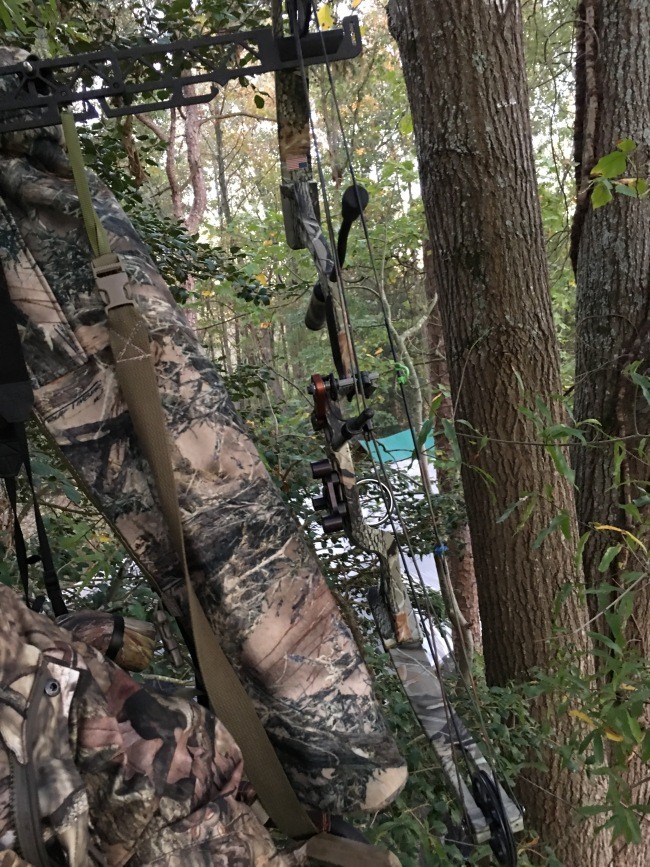 Montie Gear Quick Quiver and bow hanging from a Montie Gear Hunter’s Friend
Montie Gear Quick Quiver and bow hanging from a Montie Gear Hunter’s Friend
So, when we got the opportunity to pick up the quiet quiver product, it seemed pretty cool. And I spent a little bit of time with it on top of the mountain a while back, but haven’t spent the day hunting with it. So, I’m going to do that. So that was today. So, I took the quiver off my bow. And I will say that when you remove the hard quiver off your bow do it at home, because if you forget to do it at home and it’s oh-dark-thirty and you’re standing in the dark by the truck, when you unscrew that quiver and don’t realize you unscrewed the catch nut on the backside and that falls down, and it’s black and its dark (and its early) probably best to take that quiver off at home, the hard quiver. It took me a little while to find that nut. Found it though, so life’s good.
So, we’ve got the quiet quiver and the quiet quiver is kind of like a single strap backpack, but it’s just big enough to hold your arrows and a couple of real small pockets. One of the pockets was intended as a bowstring pocket for longbow shooters. What that allows you to do is to get the arrows off your bow and cuts down your visual signature as well. So, when you’re in a tree stand and you’ve got six fletchings or three fletchings (or however many you have in your quiver) and you move your bow, you’re taking those brightly colored fletchings and you’re waving them in front of the deer. A quiet quiver hides those fletchings inside the quiver, so you’re not adding that visual signature to your repertoire. Instead you’ve got a fairly quiet way to hold that.
So, here’s some things I learned with actually taking this out in the field. One is that, of course, it’s one more thing to manage on your back. So, if you’re carrying a hunting pack that has calls in it, my line to pull my bow up a tree, snacks, what have you – then it’s something you’ve got to figure out how you manage both of them. Because if you just throw this over one shoulder, then I don’t like that because its constantly moving around. If you put it over shoulders, then you’ve got a strap that’s going underneath your pack or over your pack, so how are you going to kind of rig that. And the other option is that you can use the strap . . . unsnap the strap and connect it to straps on some hunting packs that are meant to hold equipment. That’s an option depending on what type of hunting pack you use, or maybe you sew something on or Velcro or zip tie something on that allows you to snap your quiver into your pack. And that’s really nice. I haven’t done that yet. But it seems like that would be pretty easy to do, just looking at everything.
Once you get the quick quiver situated on your back, to where you’re comfortable with how you’ve kind of rigged everything up – which strap goes where and so forth – then it’s light enough weight that you really don’t notice the weight. The arrows are light, the quiver’s light. It’s just not a big weight penalty. Some nice things are that once you get up in your tree stand, you can unsnap the quiet quiver and snap that to a carabiner off your tree belt or off your tree stand or what have you. And then its right there at the right height if you need. So, you can quietly drop your (in my case, left) hand down, push the arrow up slightly off the foam that’s capturing the broadhead lightly, and then push it up and then slide it down. And then you’re ready to nock the arrow.
We have product called a Hunter’s Friend that’s a Montie Gear product, that works great for bow hunting; it works good for rifle hunting. It works awesome for bow hunting, though. And what it allows you to do is to strap this to the tree and it basically sticks an arm out from the tree; an aluminum, ultra-lightweight arm. And that arm supports your bow. It also supports my binoculars. And the other this is the strap for quiet quiver. So now I’ve kind of got everything I need right there, at arm’s reach, but I’m not having to hold onto that bow for four hours. Which, I get tired of doing that after a while. And so, the quiet quiver works really well with the Montie Gear Hunter’s Friend. And the other place it works really well, too, is that after I came out of the tree stand, I decided to do a tour of the property and just see what I flushed. And so, I had the quiet quiver strap over my shoulder, kind of messenger bag style, cross style, and that works fairly well once you get the length of the strap adjusted right. So that way I can move easily. It’s really not in the way of shooting my bow. And so, overall, that worked pretty good. The downside’s I see are that its one more piece of stuff to manage, moving in and out. It manages easily on the tree stand. I was really happy about how its not a pain when you’re in the tree stand to manage. Now, of course, that’s going to vary, too, depending on the size of your tree stand, how you set up your tree stand. There’s a lot of things that could impact that. But, like I said, using the Hunter’s Friend, getting in and out – I really didn’t have any problems. So, I was pretty happy with that.
So, this wasn’t a product we designed. This was a product from a gentleman that we were introduce to up in the mountains. And he’s a longbow hunter and so the few minutes I spent with the product, when we met up at Troublesome Gap to take delivery of the first batch, it seemed good; but I wanted to test that out, of course, in real conditions.
So, overall, I think that for this to be an effective product, just like with any piece of equipment you’re going to use for hunting, spend a few minutes before you get on the trail, before you get in the stand, and work out how you’re going to carry it, how you’re going to use it. Practice with it. And especially, since, as I said, if you mix a hunting pack with this, you want to make sure that you can don the hunting pack and quiver easily, and doff it (or put it on and take it off) so that you’re not fighting that in the dark. And then the other thing, too, is think about how this works with your tree stand. Where do you put your gear and how is that going to fit into that? I think, overall, though, I was pretty pleased. I’m pretty happy. Some notes – the one that holds twelve arrows, I carried six in it. You could put twelve in there; its plenty big for six. We have one that’s a six-arrow one in the batch we got. And that would be fine for six or fine for a lower number. I think that one thought there is that if you’re only going to carry three arrows, then get a six one; don’t get a twelve one because its just a little extra bulk that you don’t need. If you want to carry more arrows, if you want to carry six or more, then the twelve is fine. So, I would just throw that out there. The twelve arrow version is big enough for twelve, and you might feel like it’s a little too big if you’re only going to carry three. At the same, the six-arrow one you can fit six in. Just a note for sizing.
We also do have a left-handed one that you can get. And if you need a special one, we can special order that. There’s so much hand content that goes into these that doing a special order is not really a big deal. They’re all made one-by-one, anyway, and there’s so much labor that goes into it. It’s not a big deal. It is quiet. It definitely lives up to that name. There’s not a lot of noise. The only noise that you can have off this, one is unsnapping it and snapping the snaps for the strap; and those nylon snaps can be a little noisy. So, I think that’s a negative. But any strap you’ve got that if you want to unsnap it in the field, there’s going to be some noise. Other than that, it’s extremely quiet.
You may want to, when you place your arrows in there, spread them out. I just kind of slid six arrows in, in a bunch. And there was a little bit of noise when the shafts hit each other. But I only saw that noise when I was messing with the arrows and I was in the tree stand and, like, for example, I’m pulling an arrow out. One time there was a little bit of noise. Like I said, because I really didn’t put any time into placing the arrows carefully, I think the next time I do it, I’ll take the twenty seconds and just kind of spread those out. There’s a foam, a very robust foam, that the broadhead sinks down into and just spreads those broadheads out, so that they don’t touch. As I said, I was a little sloppy about that and it caused a little bit of noise in the tree stand. But, overall, it’s pretty doggone quiet, especially when you’re moving through the woods. It’s soft. But if you spread those arrows out, you’re just not going to have any noise come off of that.
And the other thing, too, is that you may want to consider if you’re going to attach this to your Hunter’s Friend, and you’ve shorten the straps, then you don’t need to unsnap it. If you want to snap it to something else, you may want to consider leaving a carabiner on your tree stand, and then dropping that, like, for example, on your tree belt, I’ll leave a rope, a static line on a tree belt. I’ll put it up first of the season. And then every time I go its already there; its not something I have to carry. And I can snap it and go up the tree stand safely, and come out of the tree stand. So, I’ll leave a carabiner up there.
So, another option, of course, is to take the strap that goes across your body and just drop that onto the carabiner, which is a little quieter than unsnapping. So, there again, that’s a matter, too, of you working out how your gear’s going to interact, and how you’re going to use it and a little training and a little practice and all’s good.
So, that’s kind of my review on the way back. I did not get a deer today. I did not take a deer. I saw three nice ones, and never had a shot. So, they’re deer. But, that’s alright. It’s always a learning experience. In this case, now, I’ve got a much better idea of some of the pattern that they’re following as they’re moving. Fortunately, I got to watch them follow that pattern as they left. But, fortunately, though, it was a nice day hunting. If we got something every time out, then it’d be a boring sport. It’s a nice activity. It’s nice to get out. I appreciate Al letting me use his place.
I hope that this helps you, not only with thinking about the Quiet Quiver and whether that’s something you want to own or give as a gift, but also, too, it gives you insight into, you know, some of my hunting experiences which I enjoy getting out to. There are people that are much better hunters than I am. But I definitely enjoy it. And occasionally I’ll harvest a deer, catch a fish. But, in the meantime, I’m pretty happy. Good day and a beautiful day, especially for late October. I’m hoping this weather doesn’t get too nasty before my trip to the mountains. The last couple years it wasn’t too bad. And the year before that it was just cold. When you roll out of that tent at seven degrees, nine degrees, that’s just cold. But, there again, it was beautiful. It was quiet. You could hear the dear walking towards you for, if felt like, a mile. Unfortunately, they could probably hear me for (felt like) a mile. But we’ll see what happens in a few weeks, and I’ll try to send you some pictures. And we’ll kind of go from there.
Thanks, and have a great weekend and enjoy your next hunting trip. And if you’re looking for a present for your hunter boyfriend or husband or brother or . . . ha-ha, or sister or wife that hunts; there’s a lot of women that enjoy hunting. So, if you need something as a present for them, then I would encourage you to check out some of our Montie Gear products. They’re pretty cool. It’s not something you’re going to see everywhere you go. We only make a few, and have a good time making them. So, it’s a little different approach. Made in America. And we make products pretty much the way we want to make them. A lot of times the way I want to make them. But I get a lot of input from the community, too, so its really not an “I”, it’s a “we”. And so, we end up with products that are different; they’re tough; they’re rugged; and you can be proud to give as a gift or maybe one day you’ll give it to your grandkids or your kids when they take up hunting. So, we try to make heirloom quality products for our outdoor gear that you can feel good about that you’re going to give as an heirloom.
The Quiet Quiver, it’s a soft case; we’ll see how that wears over time. If you take good care of it, it should last a lifetime. It’s built to. And the Hunter’s Friend, that’s aluminum and stainless steel; if you don’t bend it or do something crazy with it, then that should last multiple lifetimes.
So, this is Montie Roland. I am signing off. And I’m going to go put up my gear and see what my wife’s fixed to eat. So, thanks for listening and have a great day.
Design Story – Montie Gear in the Field – Hunter’s Friend
Montie’s Note: Here is a Montie Gear product story that gives a insight into the design and a use case that includes testing and field use by the designer. This was a customer newsletter item.
Fall is synonymous with whitetail deer hunting in the South. Our wives become “deer widows” for 2-3 months while we disappear into the woods and look for that giant buck we’ve been watching for. Wives get used to seeing their husbands up late at night looking a pictures from trail cams and learn to cook venison. Saturday mornings are viewed from 20 feet up in a tree stand. Good times and priceless moments.
The Hunter’s Friend was initiated by a suggestion from Al Davis, owner of AllFab Solutions. He is an avid hunter and wanted a way to hang his bow or rifle from a tree without having to run a screw into the tree and damage the tree. A few weeks later, the Hunter’s Friend was born.
Getting your gear to the field and into the tree stand means work. Gear that you take up to the tree must be compact, lightweight and easy to deploy. Setting up your gear while you are hanging from a tree and 20 feet up means it must be well designed and flawlessly task at hand. Anything else is just something that will get left at home.
The Hunter’s Friend holds your bow (or rifle) in the ready position. Holding your bow, or rifle, in your lap can be tiring after a few hours. The Hunter’s Friend solves that problem while keeping your bow at the ready position. I also use it to hold my calls, binoculars and range finder. It straps around the tree without damage so you keep the landowner happy.
I believe that we have 3 in stock so don’t delay in ordering yours, or suggest it as a gift. Check out the pictures below from a recent hunt in Chatham County, NC.
Enjoy those priceless moments!
Click Here or on the image to order
Click Here or on the image to order
Click Here or on the image to order
Click Here or on the image to order
![]()
![]()
![]()
![]()
Write a Review – Get an Awesome Coupon!
Do really like your Montie Gear slingshot, AR-Rest or other product? Help us tell the world about the Handmade, Heirloom Quality products that we make right here in NC!
Reviewing your Montie Gear product is a great way to give potential customers access to your opinion before they buy. We’ve streamlined the review process to make it quick and easy for you. Please a take a few minutes and review your Montie Gear products by going to www.montiegear.com, logging into your account, navigating to your favorite Montie Gear product at www.montiegear.com and then click on “Add Review”. Once your review is submitted, please email me at montie@montie.com and I’ll email a coupon code good for 25% off your next purchase!
Our philosophy for Montie Gear products is pretty straight forward. We provide “Heirloom Quality Products That are Troublesome Gap Tough”.
Many products in today’s world are meant to have a limited life time. A good example is that cell phone that you need to replace every two years. It works great, but over time technology changes and the fragile electronics have a limited lifetime. We want to design and sell products that have a very long lifetime and may actually get passed along to your kids or grandchildren. Many rifles get passed along from parent to children, sometimes marking a rite of passage. Granted a shooting rest isn’t as special as your Grandfather’s rifle. However, we work to design and sell products that are simple, elegant and high enough quality that you will want to pass them along to your kids or grandchildren.Troublesome Gap Tough
Troublesome Gap is a place in Western North Carolina, near the peak of Hap Mountains and overlooking Spring Creek, NC. My parents purchased the property over 40 years ago. I grew up spending time there. We cut firewood for heat, picked blackberries and raspberries, and spent some great weekends up there. Troublesome Gap is remote and rugged, the prefect place to test our products. Troublesome Gap Tough means that the products are rugged and easy-to-use. A delicate, hard-to-use product is a liability in the field, so we avoid that by making sure all our products provide a great customer experience and are built to last, even in demanding conditions.
As President of Montie Design, I am proud the fact that we are shipping high-quality, U.S. made products. I am also proud to be an American.
Sincerely,
Montie Roland
800-722-7987
Lean Shipping Desk – How Montie Gear Does Lean Manufacturing
If you are going lean, the boss has to set the example. One of the places where I spend a lot of time is at the shipping desk. So my 2 second lean project for the week is cleaning up the shipping desk. Here are the results.
Questions, comments, videos, suggestions are all welcome!
Montie
montie@montie.com
